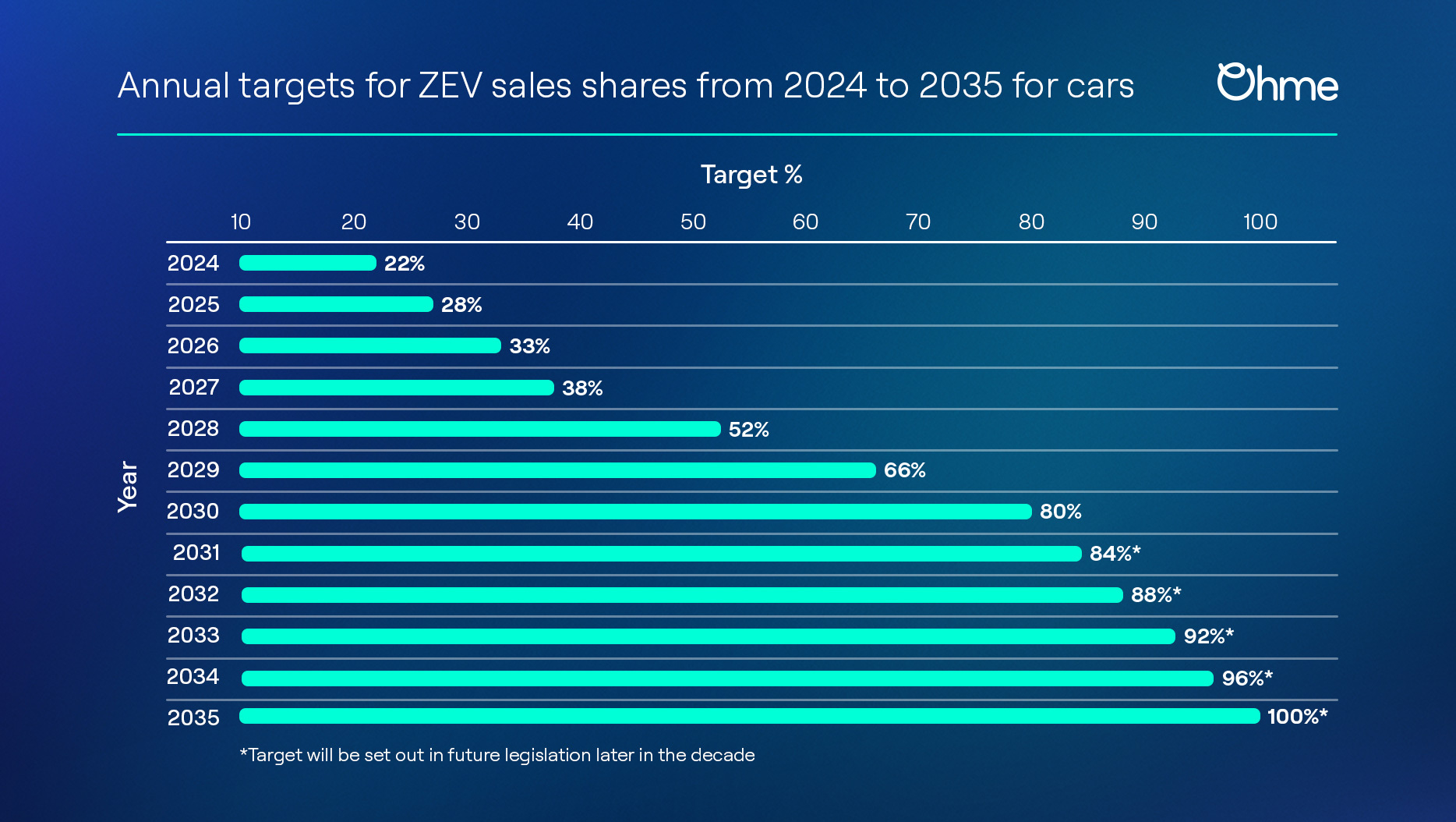While the recent announcement on the cancellation of the 2030 plug-in hybrid ban got plenty of headlines, the main focus should really have been on the zero emission vehicle ZEV Mandate statement made shortly after that.
This saw the government lay out its path for all new cars to be zero emissions by 2035 with the unveil of the ZEV mandate figures. In essence, this mandate sets EV targets for car manufacturers for new car sales starting from 2024 and gradually increasing to 100% by 2035.
The mandate starts from 2024 at 22% meaning that 22 out of every 100 new cars sold by every mainstream manufacturer much be zero emissions. Current EV new car sales stand at 16.4% of all new cars sales so far this year, so there’s still a little way to go.
In reality of course, some manufacturers such as Polestar and Tesla with their all-electric line-ups, are already at 100 per cent. Those and other manufacturers already above that stipulated 22%, will be able to ‘trade’ their remaining allowance to other manufacturers who have yet to meet that target.
However, the targets will only get more challenging each year to encourage car companies to sell more EVs, rising to 80% of all their sales by 2030. The mandate is particularly stringent for the four years from 2027 where it jumps 14% each and every year to reach 80% by 2030. The target for vans is a slightly more steady rise.
So while in theory car manufacturers could continue to sell non EVs up to 2035, the reality is that it will be increasingly less viable for them to do so before then, particularly after 2030. And, if their sales are ahead of the mandate, they can trade every additional percentage they make too.
Some manufacturers such as Stellantis brands Citroen, Vauxhall and Peugeot are already on record stating that their entire ranges will be fully electric by 2028, so they will be ahead of their competitors and ahead of the mandate.
So the reality is that the ZEV mandate figures will make the 2030 decision largely irrelevant anyway and ultimately those are the numbers to focus on. And the great news is that thanks to that ZEV mandate, the transition to EVs and cleaner, smarter and more affordable motoring is still on track.
